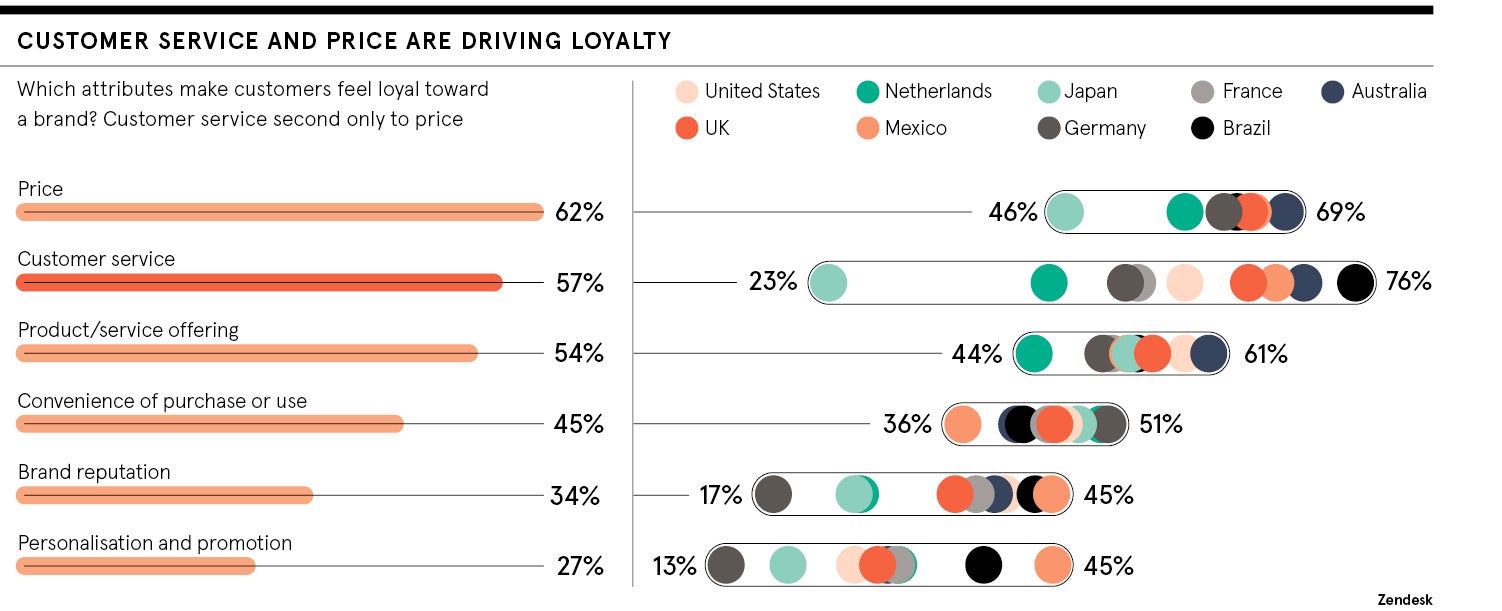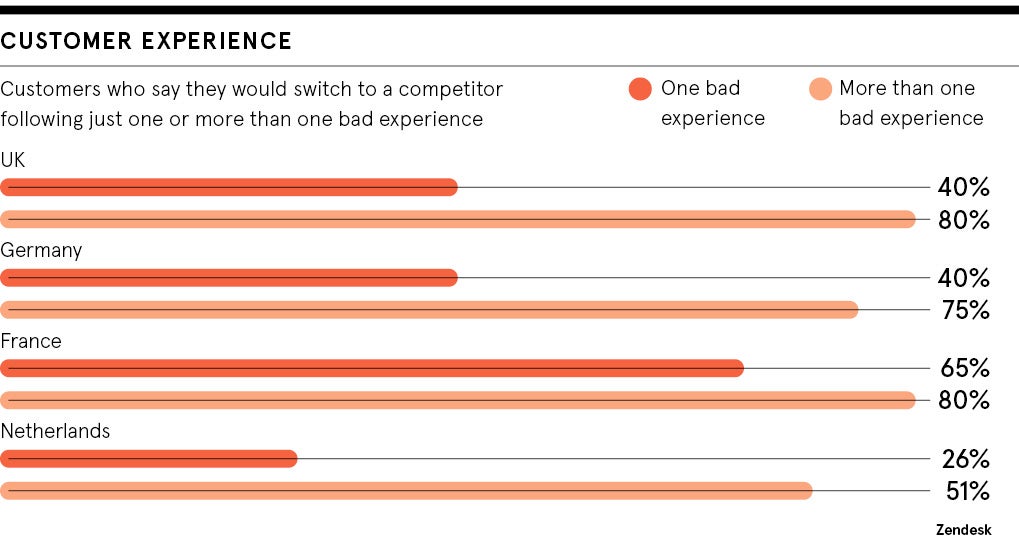When looking at company-wide customer experience, brand loyalty is not as simple as buying that same bottle of tomato ketchup you always reach for in the supermarket. Obviously, if you like the taste of something, you’ll keep coming back for more and because customers know they’ll get the same experience every time, they stay loyal to a brand.
It’s a little more complicated than ketchup for businesses offering a service because every interaction has the potential to be different and the experience a customer has with a service today might be entirely different to the one they have tomorrow.
However, the more uniform a service becomes and the more a customer can be guaranteed the same experience, the more likely a business is to create brand loyalty and generate returning customers.
After price, service is the single biggest factor driving customer loyalty, a fact highlighted by Zendesk’s Customer Experience Trends Report 2020. Zendesk are a leading customer relationship management company for sales, service and engagement, so they are perfectly placed to look into the customer experience by using survey results and the Zendesk Benchmark, an index of product usage data from more than 45,000 global companies.

The report reveals that half of customers will switch to a competitor after just one bad experience and 80 per cent will leave after multiple bad experiences. The customer has always been king, but in a highly competitive marketplace, their level of power and choice is clearly at an all-time high.
As well as shining a light on customer attitudes, Zendesk’s report highlights some of the most important service traits that are common to the most successful companies and signposts them to show how other organisations, regardless of size or industry, might follow their lead.
“We are in an entirely new era of customer expectations, and companies now need to earn and re-earn a customer’s loyalty with every interaction,” says Daniel Bailey, vice president, Europe, Middle East and Africa, at Zendesk. “To build a loyal customer base and truly differentiate themselves, companies need to consider the full customer experience and ensure they can provide an easy and frictionless customer experience.”
With a highly efficient omnichannel approach, you can create those positive interactions where the customer knows what to expect and keeps coming back
The report says one of the most effective ways to give customers this experience is to ensure they feel they are having a continued conversation with the company. Customer frustrations have always come from fragmented conversations, being made to wait, and information not being passed on to the right people; but it has become even more crucial in a time when we carry connectivity around with us.
These days, as well as connecting over the phone, email and online, customers expect to be given the option to communicate over social media, social messaging and in-app alerts. When that option isn’t serviced well, or is lacking entirely, they will simply take their business to a company that is doing it better.
According to the Zendesk report, the omnichannel approach is the one taken by the most successful companies that are able to boast satisfied customers who they know will return and the number of companies using Zendesk to take this approach has increased six fold over the past five years.
However, omnichannel is not an easy thing to deliver, as every customer journey is fragile and beset with moments where they can feel they’re not being listened to or aren’t being given the information they need. And that’s when loyalty is lost.
“Customers don’t differentiate between your marketing, service and sales departments. They want one connected interaction that can get them quick solutions,” says Bailey. “It means businesses need to consider connecting information across departments, often across multiple systems, to have a full understanding of the customer’s needs.
“We’re seeing customers like Bloom & Wild, MADE.com and Trustpilot realise the benefits of offering support across a spectrum of channels and often backing this up with self-service options as well.”
The most successful organisations also seamlessly manage those moments when customer communication changes from one channel to the next.
For example, the changing pace of our lives means a customer can begin a conversation on instant message, switch to email and revert back to message if they’re pushed for time. If the customer feels communication is convenient, quick and efficient, no matter how they’ve chosen to connect, it will almost certainly enhance feelings of loyalty.
The report found companies offering omnichannel support resolve issues with customers three times faster and cut the time a customer is left waiting for an agent to respond by 75 per cent.
Omnichannel also requires a company to adapt to emerging channels and over the past four years Zendesk has seen more than four times as many customers using chat to start a conversation compared to five years ago.
Phone support still remains one of the most popular methods of connecting, but the high performers are constantly adding to their communications spectrum.
In-app messaging, Facebook Messenger and WhatsApp can all mimic live support, without the pressure of having to complete the entire conversation in a single sitting. This gives customers more choice about where they want to meet a company and by whichever method is the most convenient for them.

And its messaging apps that have the highest customer satisfaction rating, with the Zendesk report revealing successful companies are 22 per cent more likely to use messaging compared to companies which are underperforming.
“Customers want to connect with companies in the same way they communicate with friends and family, and many brands are recognising the opportunity to offer support through messaging apps like WhatsApp and Facebook Messenger,” says Bailey. “These channels can also offer rich personalised interactions beyond service, such as collecting feedback or offering additional product recommendations based on a customer’s past behaviour.”
And with a highly efficient omnichannel approach, you can create those positive interactions where the customer knows what to expect and keeps coming back. Proof that when it comes to brand loyalty, attention to customer service is something every business can benefit from.
For more information please visit www.zendesk.co.uk/cx-trends


